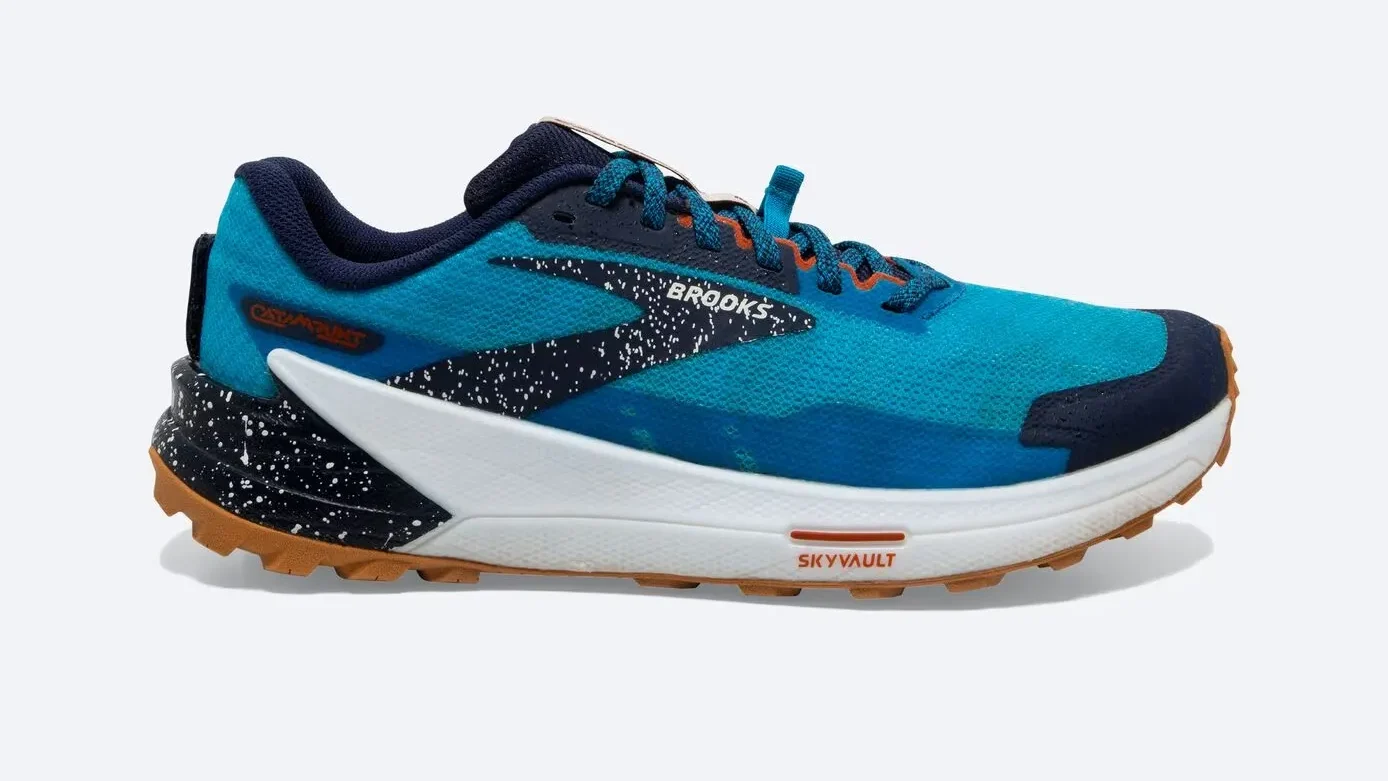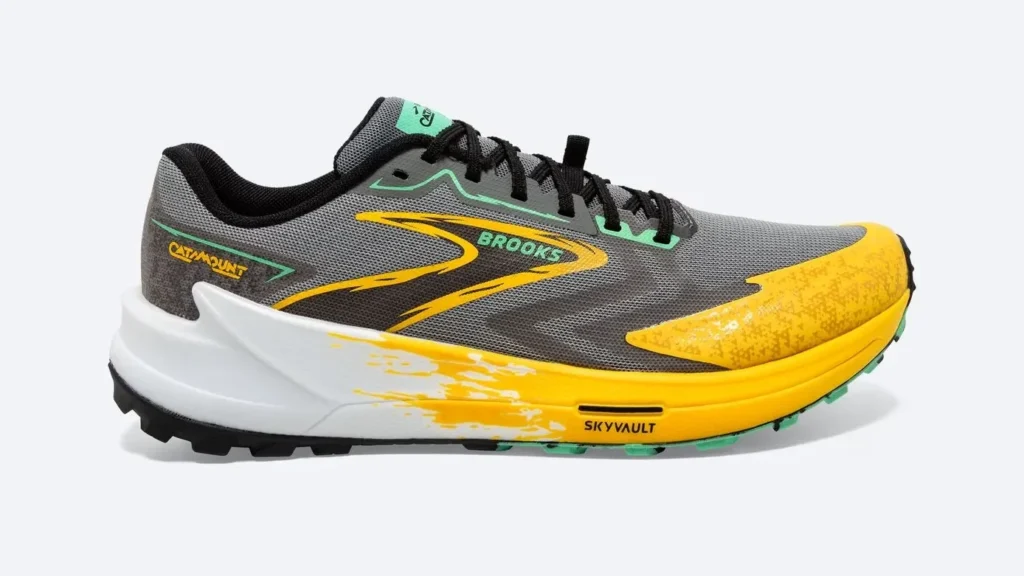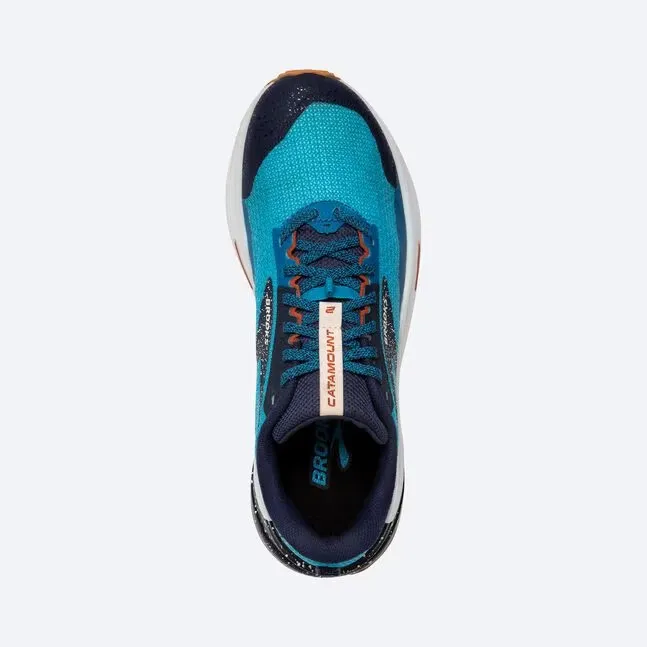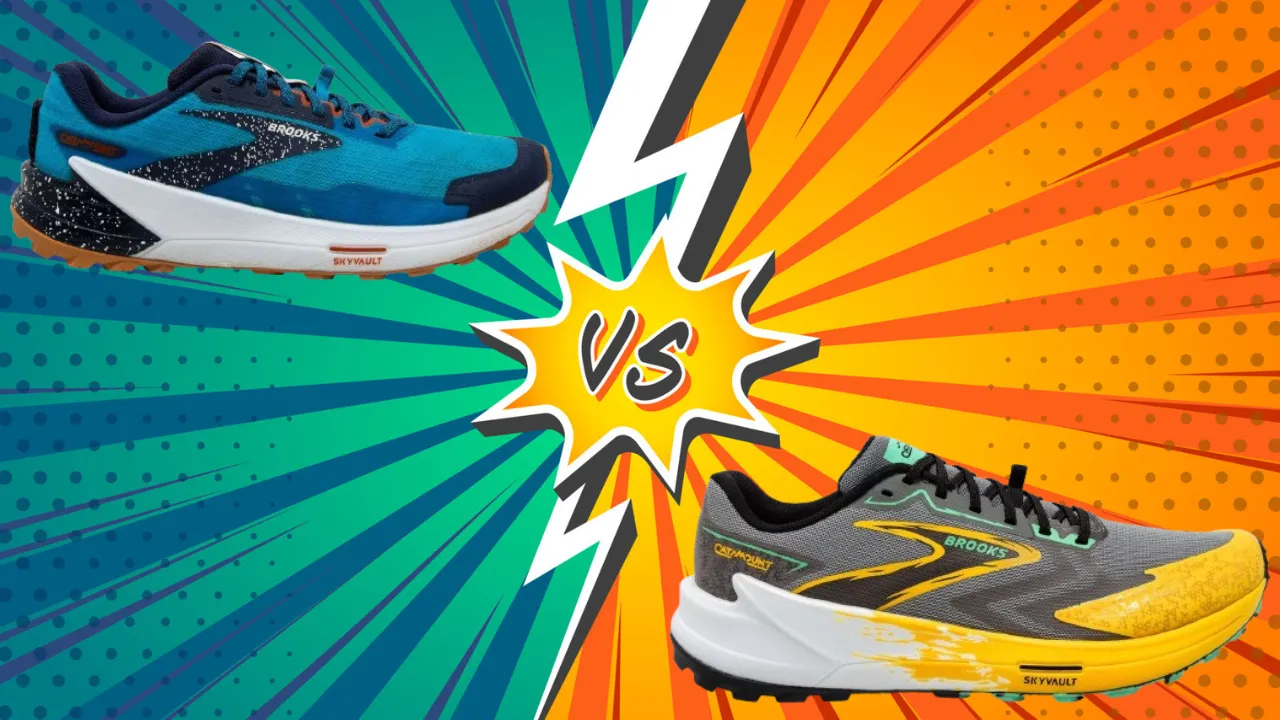If you’re a trail runner searching for a lightweight, responsive shoe that can tackle varied terrains, both the Brooks Catamount 2 and 3 deserve your consideration. These all-purpose trail shoes provide grip, protection and versatility to take on dirt paths, forested trails, gravel or light technical terrain.
In this in-depth comparison, we’ll analyze the key performance factors – from materials and construction to stability, cushioning and value – to help you determine which Catamount model is the best fit for your off-road adventures. Whether you’re a dedicated trail runner or a road runner looking to take your training off pavement, read on to see how the Catamount 2 and 3 stack up.
Comparison Table Between Brooks Catamount 2 VS Catamount 2:
| Feature | Catamount 2 | Catamount 3 |
|---|---|---|
| Launched In | 2023 | 2024 |
| Stability | Medium | Medium-High |
| Flexibility | Medium | Medium |
| Sizing | Runs Small | True to Size |
| Weight | 9.7oz men’s, 8.6oz women’s | 10.2oz men’s, 8.9oz women’s |
| Cushion | Medium | Medium-Plush |
| Outsole | TrailTack rubber, 2mm lugs | TrailTack Green rubber, 5mm lugs |
| Midsole | DNA Flash Foam | DNA Flash + Skyvault plate |
| Upper | Breathable mesh + water resistant layer | Light, flexible mesh + overlays |
| Retail Price | $170 | $170 |
Features Comparison:
Materials:
The Catamount 2 uses a grippy TrailTack rubber outsole with 2mm lugs, providing traction on dirt, grass and gravel trails. The responsive DNA Flash midsole aims to deliver ‘speedy softness’ while the upper combines breathable mesh with durable, lightweight synthetics in high-wear areas.


The Catamount 3 has a more aggressive TrailTack Green rubber outsole with 5mm lugs for added traction and braking power. A Skyvault carbon fiber plate adds propulsion and protection through the gait cycle, working with the DNA Flash foam for a stable, well-cushioned ride. The mesh upper includes printed overlays for structure and support.
Duribility:
Testers found that both the Catamount 2 and 3 hold up well over miles of use without excessive wear. The Catamount 3 may have a slight edge for long-term durability thanks to its fortified toe bumper which provides extra protection against stubs and rocks. The more rugged 5mm TrailTack Green outsole rubber also means the lugs will remain prominent for longer, maintaining traction even as the miles pile up.
Additionally, the stabilizing Skyvault plate on the Catamount 3 resists flex and compression creasing in the midsole which often leads to material breakdown. Both models feature outsoles durably bonded to maintain smooth transitions underfoot over time.
The upper mesh on both seems prone to some loosening over time but overall construction appears solid enough for most runners to get multiple seasons of use before considering replacement.
Fit:
The Catamount 2 runs small and narrow according to most runners. Those with wider feet will likely find it too constricting, especially in the toe box. Consider sizing up a half or full size for a more comfortable medium fit, allowing room to splay toes.


The Catamount 3 fits true-to-size for most with a higher volume through the midfoot and toe box. Transitioning road runners may still want to size up since the mesh upper fits closely; size up if you prefer more generous room to control foot swelling on long runs. Overall, the Catamount 3 accommodates more foot shapes and allows for natural toe spread during the gait cycle.
Cushioning:
With its DNA Flash foam and lower profile, the Catamount 2 has a firmer, more responsive feel underfoot for quicker turnover and ground feel. The Catamount 3 offers more overall cushioning with its plushier compound enhanced by the responsive Skyvault plate. Choose the 2 for speed and close-to-ground sensation or the 3 for extra comfort on longer distances.
Stability:
The Catamount 2 provides adequate midfoot stability for neutral runners on moderate trails but some pronators may find it too flexible. The Catamount 3 beefs up support with its stabilizing Skyvault plate, giving it better scores for keeping the foot secure and centered throughout each step. Overall advantage goes to the Catamount 3 for torsional rigidity and rollover stability.
Value:
With both models priced at $170 retail, you get your money’s worth with either durably-constructed Catamount option. The versatile Catamount 2 punches above its lightweight price point by providing a responsive, well-fitting shorter distance trail shoe.
Meanwhile the Catamount 3 brings more protective features and premium compounds to support logging daily training miles at any pace. Unless running high weekly volumes, most runners should feel satisfied with what either model delivers performance-wise for the reasonable $170 investment.
Performance Comparision:
For Walking:
Both Catamount models provide a smooth walking ride, but the Catamount 3 will likely feel more comfortable for long fitness walks or all-day wear thanks to its plusher cushioning. The roomier toe box also allows for more natural toe splay to push off during walking gait.
The Catamount 2 may feel slightly stiff in the forefoot by comparison but otherwise walks well at an easy pace. Those strictly walking may find the aggressive lugs cause some tripping on smooth surfaces.
For Running:
For shorter, faster trail runs targeting PRs and Strava segments, the Catamount 2 gets the edge for its firmer, snappier cushioning tuned for speed. The low-profile design connects better to the ground for confident cornering and footing at tempo pace or faster.
The Catamount 3, while still responsive, has more heel cushioning to soften impact for logging daily miles. It offers a more protective ride for long runs where hardy performance still matters but fatigue is a factor.
For Standing All Day:
Though designed as a running shoe, the well-cushioned Catamount 3 can make an excellent pick for jobs that require hours of standing with its plush DNA midsole absorbing fatigue.
The arch support and stability plate also prevent soreness related to prolonged standing or walking. The Catamount 2 lacks the all-day cushion and support – we’d recommend trying an everyday Brooks walking shoe instead for extended wear comfort.
For Plantar Fasciitis:
Runners struggling with plantar fasciitis will appreciate the shock-absorbing cushion and arch support built into the Catamount 3, preventing re-aggravation of PF pain.
The Skyvault plate also helps guide the foot smoothly through transition for an overall lower-stress running experience. If opting for the Catamount 2, consider adding your own orthotic for targeted arch support and relief of symptoms.
conclusion:
For runners needing to pick up the pace on roads, gravel or mellow trails, the Catamount 2 checks all the boxes as a faster, lower-to-the-ground speedster with impressive versatility given the price.
However, the newer Catamount 3 takes the lead overall as the more durable, protective trail crusher equipped to handle rugged terrain, longer distances and tired legs thanks to added features like its stabilizing plate, grippier lugs and brand-new foam. Unless you strictly run short, weekly trail workouts, the Catamount 3 likely brings more performance to match an array of off-road needs.

